With 10 days between our housesits in Denmark and Belgium, we set off to the Netherlands to binge on art and architecture. I expected to revel in old things—17th-century paintings and traditional canal houses with decorative gables. I didn’t expect to find so many modern things to love.
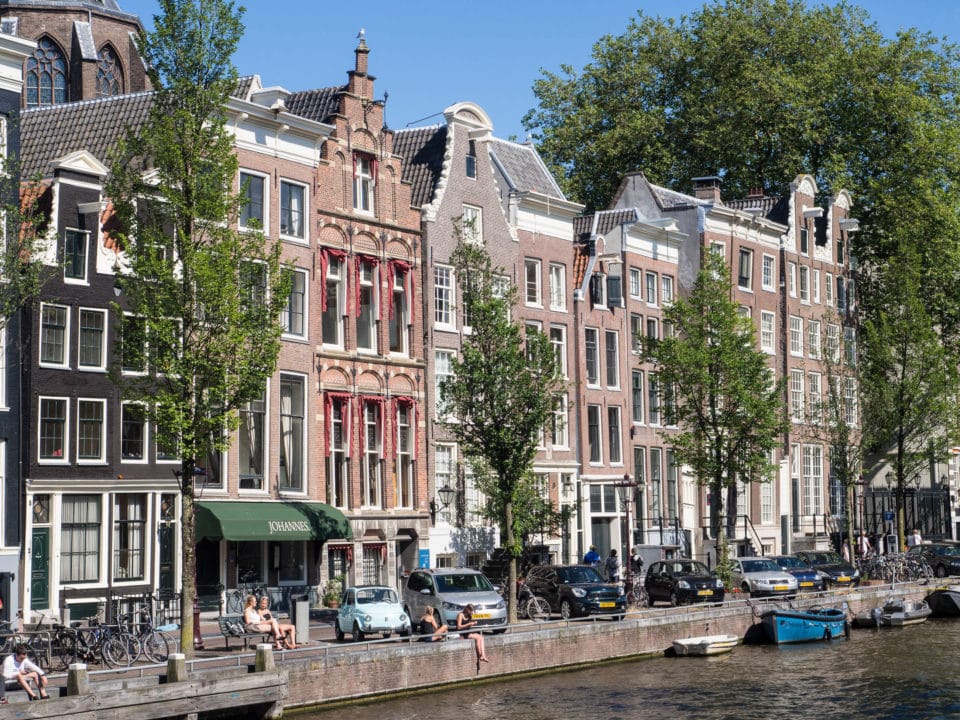
In Amsterdam, we stayed in a little hotel (the Concert Hotel) in a residential area near the museum district. It was on a quiet street a bit outside the old center, which was a good thing because Amsterdam in August is ridiculously crowded. The sidewalks from the central rail station to the main square were six-deep in tourists in each direction.
We got some relief from the crowds by going to museums, though they also tended to fill up by midday. We immersed ourselves in the work of famous old Dutch painters—Vermeer, Rembrandt, Frans Halls, Jan Steen—at the Rijksmuseum in Amsterdam and the Mauritshuis Museum in the Hague (as well as slogging through many rooms of dull still-lives and landscape paintings).
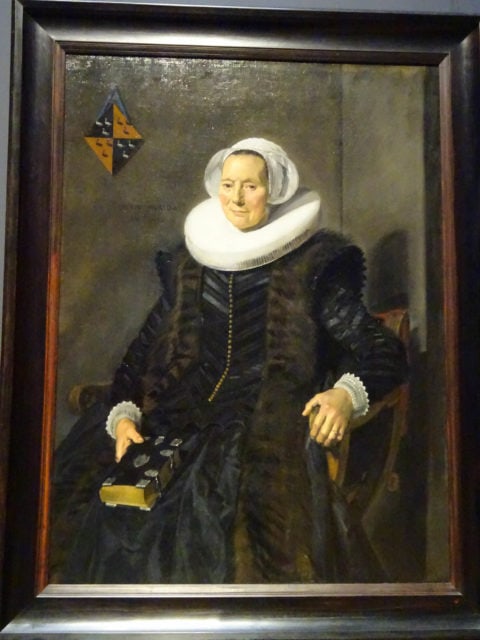
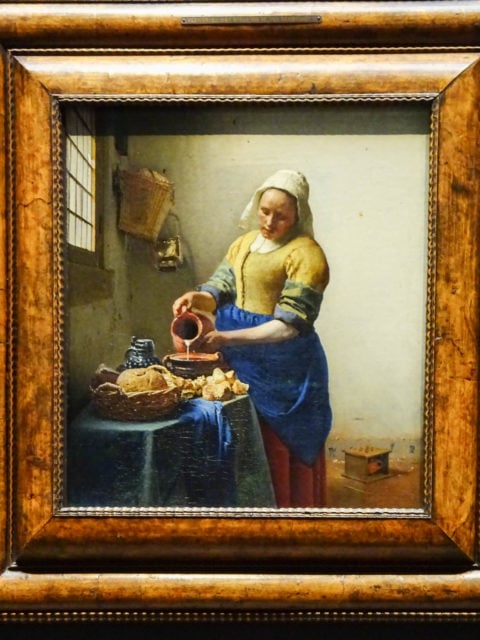
We also learned about the history of Amsterdam at the city museum. It turns out that every building in Amsterdam, old and new, is sitting on hundreds or thousands of wooden piles (long vertical poles) sunk into the soggy sand that underlies the city.
Later we took a tour boat around the major canals and noticed how many of the old canal houses appear to be sinking a little and leaning to one side, apparently held up by the houses next door. Nevertheless, the city seemed schlockier and less picturesque than we’d expected (and than I remembered from my previous visit, in 1986).
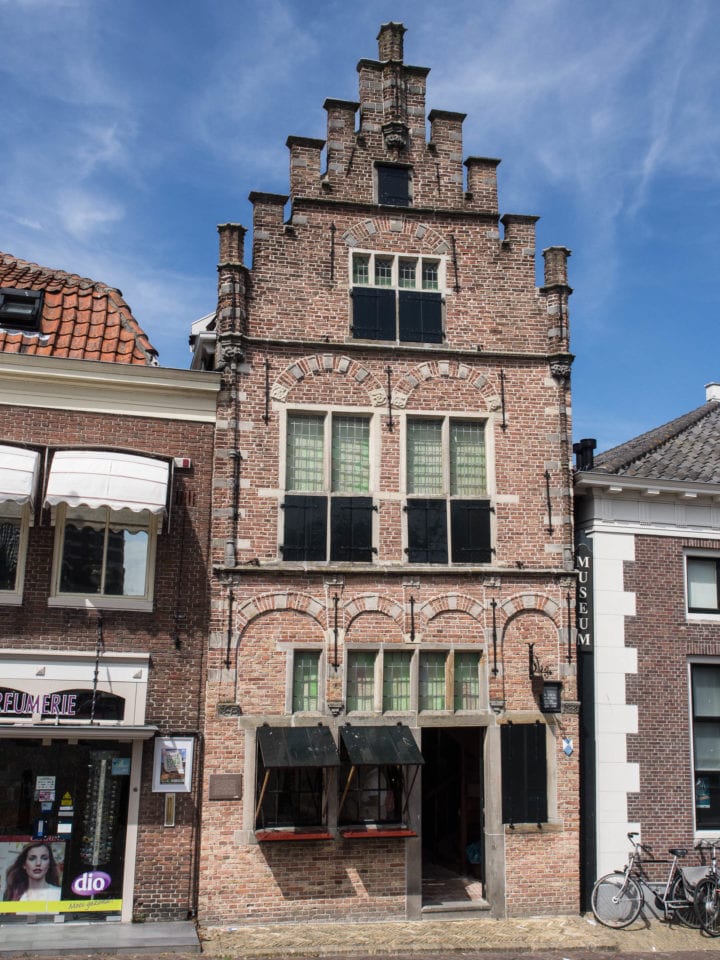
On a day trip from Amsterdam, we strolled through the pretty little town of Edam, which shares its name with a famous Dutch cheese. There we toured the oldest brick canal house in town (above), now turned into a museum, and felt like we were living in the 1530s. There were steep stairs, cozy beds built into nooks in the wooden interior walls, tall windows in the sitting room looking into the back garden, and a low-ceilinged kitchen with a big cooking hearth. The house also has an unusual feature: a floating cellar. A ladder from the kitchen leads down to this suspended, box-shaped room of glazed white bricks, which floats freely on the groundwater under the house.
Another day we visited Kinderdijk, which has one of the largest collections of old windmills in the Netherlands. Nineteen windmills from the 1700s stand in rows on dikes between waterways. Their job was to pump water out of the surrounding marshland so it could be farmed (a job still being done today, but by big modern pumps).
It was fun to see the small living quarters built into the bases of the windmills. There, people raised their families, planted little gardens out the back door, and raised a few animals, to the constant creak and whoosh of the turning cranks and sails.
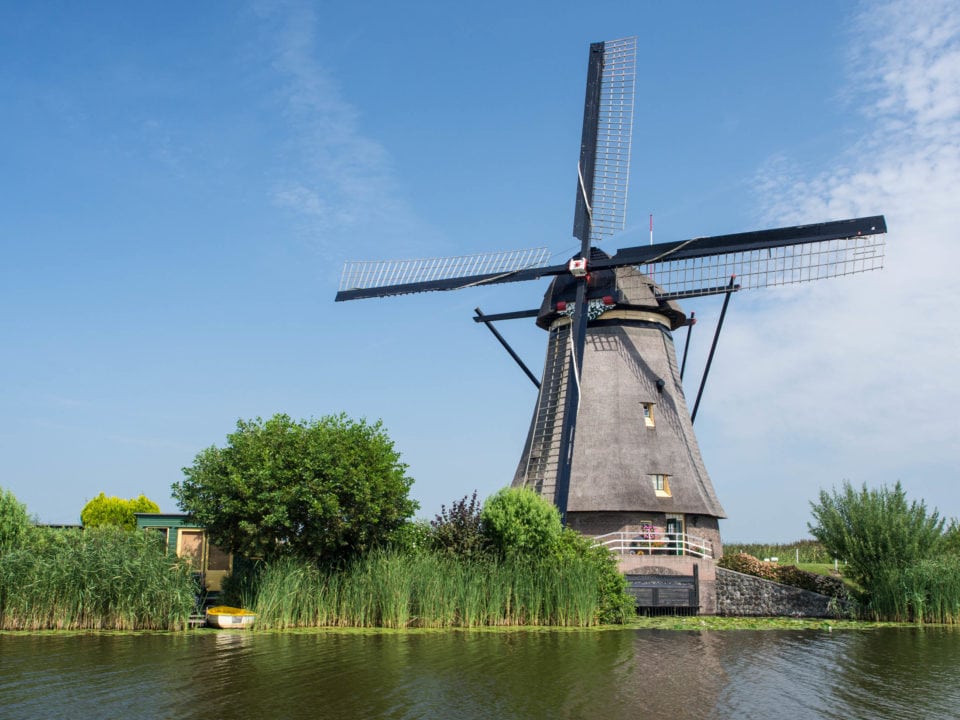
All of that was the sort of Ye Olde Netherlands experience I’d anticipated. But I was surprised by how many of my favorite things in the Netherlands were much more modern.
In Amsterdam, there were the unexpected Art Nouveau touches on buildings and the excellent and very popular Van Gogh museum (which didn’t exist the last time I visited Amsterdam). The museum does an especially good job of showing the progression of Van Gogh’s style over the years, the ways he tried different experiments with color, and the way he was influenced by other painters of his day. When we visited southern France with Melissa’s mom in 2010, we saw Van Gogh’s house in Arles and the asylum in Saint Remy where he stayed near the end of his life. So it was especially interesting to see his paintings of those places we’d been.
One of the biggest modern surprises was a special exhibit in the Amsterdam Stedelijk Museum of art work by Henri Matisse. I knew very little about that Frenchman, but Melissa was eager to go, and there are few things I like more than learning all about some new artist.
I found out that Matisse, whose long career lasted from the 1890s to the 1950s, tried his hand at most of the painting styles that arose during that period. And in addition to painting, he sculpted, made collages of cut-out paper (works that focus on pure color, shape, and arrangements of space), and designed a church interior (from the stained glass windows down to the priests’ vestments). I’m continually astounded at the diversity of creative expression in the world. It was interesting to see how Matisse’s particular type of creativity developed and flourished.
After Amsterdam, we moved to the city of Rotterdam, and there we lived right in the middle of modern marvels. The largest port in Europe, Rotterdam was heavily bombed in World War II. As it rebuilt, the city encouraged all manner of modern architects to experiment, and the result is a skyline of fantastically inventive skyscrapers, bridges, and apartment buildings. We rented an apartment in one of Rotterdam’s iconic structures: the Pencil Building designed by architect Piet Blom in the 1980s.
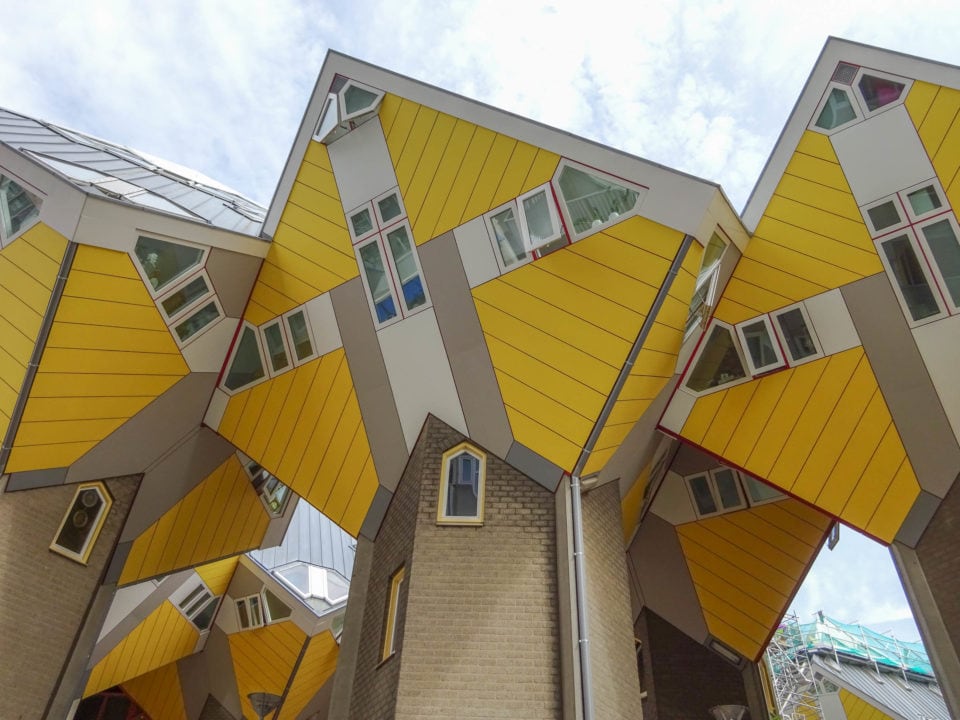
Next door are Blom’s even more famous “cube houses”—yellow and white interlocking cubes set at an angle on brick pillars to resemble an urban forest. Most of the cube houses are private apartments, but one is open as a museum. It’s fascinating to see (as in the old windmills) how people live in such interestingly shaped spaces.
From our living room window, we looked down on one of Rotterdam’s newest examples of modern architecture: a vast silver market hall shaped like an airplane hangar, with giant glass walls on the ends, a huge food-themed mural on the curved inside ceiling, apartments set into the exterior, and an array of restaurants and high-end food stalls on the main floor below. Food and art, now there’s a great combination!
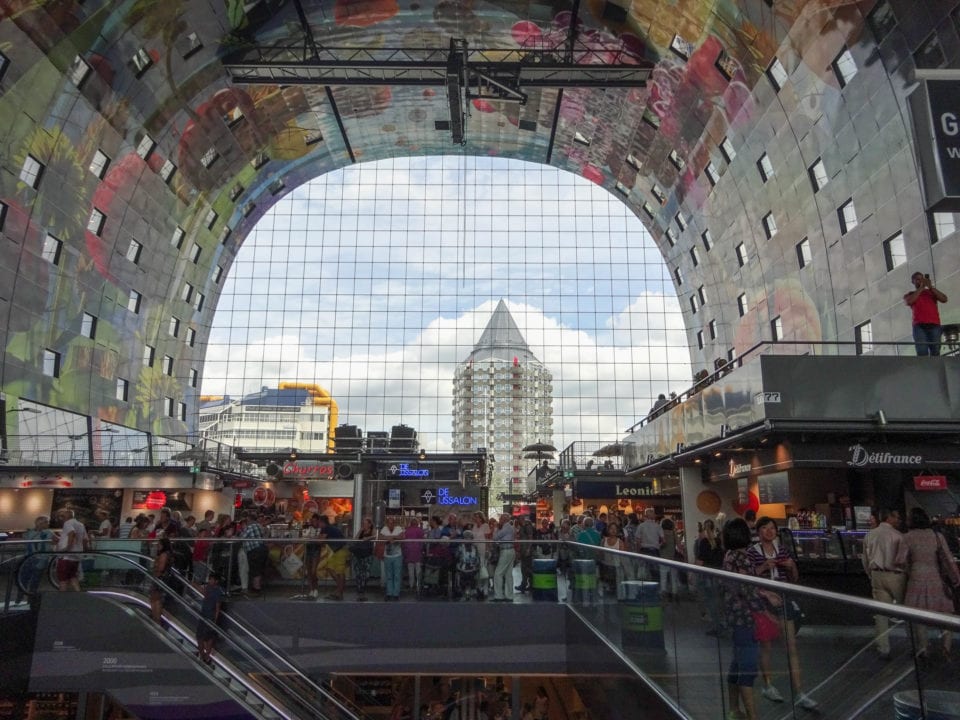
If you visit the Netherlands in search of old-fashioned charms, I heartily recommend that you also make time to see the Rotterdam skyline. That vibrant cityscape is the perfect complement to gabled canal houses, windmills, and tourist shops full of Dutch cheese and Delft pottery—a reminder that the artistic explosion that made the Netherlands famous is still going strong 500 years later.
CaNot wait to see more pics of the Netherlands! This article just whet my appetite for more. Awesome reporting, Chris!
Thanks, Dad K! Photos coming next.
another great armchair trip for me. Thanks so much. I, also am anxiously awaiting the pictures. Great job ladies.